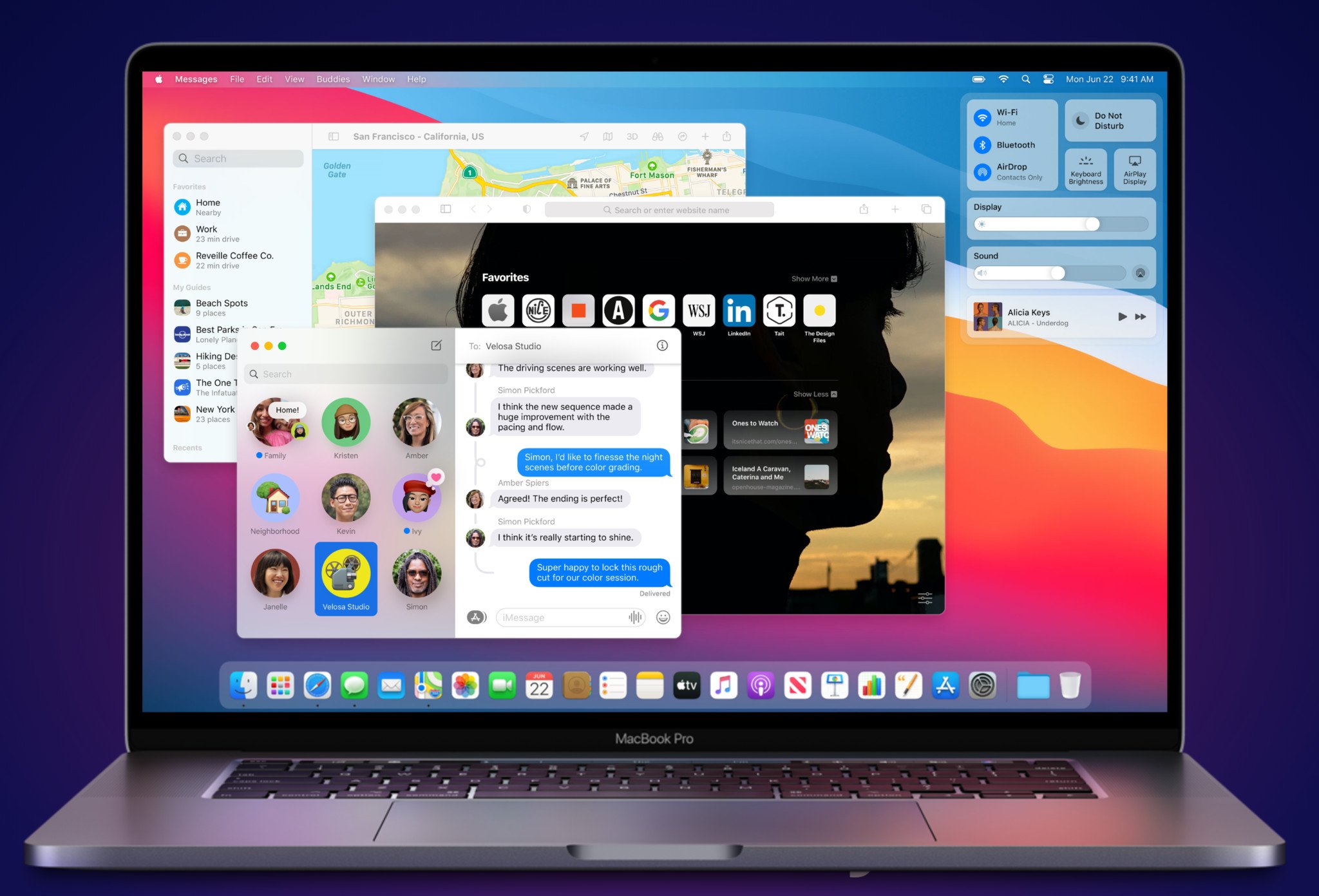macOS Big Sur makes Macs with touchscreens seem within reach

Since the WWDC 2020 keynote on Monday, and since spending significant time with its developer beta, I've had one recurring thought about macOS Big Sur: "Man, this would work well on a touch screen."
Now, I've been one of those people saying that touch wouldn't come to the Mac. But a lot of the changes, and this is a sentiment that I've seen in a myriad of places around the internet since Monday, really do make the Mac look and feel, on a basic level, more like an iPad.
Some controls are larger. There's more space between items in drop-down menus. The Safari address bar (and admittedly, this could just be a trick of perception) seems a bit wider than it used to. All of it looks like it could accommodate a pointer with more surface area than the standard macOS cursor.
Now, this isn't to say that there are definitely touch Macs on the way. But there's one more factor that makes the prospect at least more plausible than it used to be: Apple silicon.
Apple is transitioning the Mac lineup to its own in-house chip architecture, the same kinds of chips that it's been putting in iPhones and iPads for the last decade. And because these new Mac chips will run on the same instruction set as the chips for iPhone and iPad, Apple has announced a new feature coming to Macs running on Apple silicon: iPhone and iPad apps.
Starting when these new Macs ship, iPhone and iPad apps will be able to run on macOS without any modification whatsoever. If a developer wants to use their iPad app as the basis for a custom Mac experience, they can do so using Apple's Catalyst tools to turn those iPad apps into native Mac experiences. But for those apps that aren't built using Catalyst and don't have a Mac version, developers can just let customers download them through the Mac App Store with no additional work.
And while these apps will undoubtedly be useable with a mouse or trackpad (it works with the Xcode Simulator, after all), the best way to use them is still going to be through touch. Sure, you don't want to reach up to the screen to interact with software regularly. It's why I'm glad the iPad now supports trackpads and mice. But when it's incidentally helpful, yeah, it's good to have touch support.
I don't think we'll ever see a Mac tablet, just like I don't think we'll see an iPadOS laptop. As iPadOS is a touch-driven system with pointer device support, macOS is a pointer device-driven system that could accommodate touch support. We could be headed towards a future of more blended devices that are adaptable to more needs.
I'm not saying that it's definitely happening, or happening soon, but macOS Big Sur certainly seems to me to be laying some groundwork.
Master your iPhone in minutes
iMore offers spot-on advice and guidance from our team of experts, with decades of Apple device experience to lean on. Learn more with iMore!
Joseph Keller is the former Editor in Chief of iMore. An Apple user for almost 20 years, he spends his time learning the ins and outs of iOS and macOS, always finding ways of getting the most out of his iPhone, iPad, Apple Watch, and Mac.

